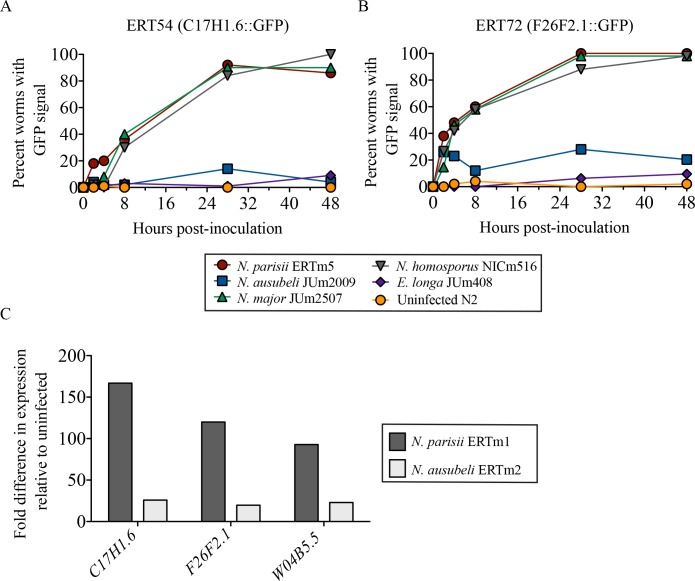Fig 9. Responses of C. elegans strains with transcriptional reporters C17H1.6p::GFP and F26F2.1p::GFP to exposure by different microsporidia.
Strains ERT54 carrying C17H1.6p::GFP (A) and ERT72 carrying F26F2.1p::GFP (B) were analyzed for GFP induction at different time points after infection with different microsporidia and the proportion of animals with GFP induction is shown. GFP was reproducibly induced in ERT54 and ERT72 upon infection with N. parisii, N. major and N. homosporus, while GFP signal was rarely observed in ERT54 and ERT72 inoculated with N. ausubeli or E. longa or the negative control. N. ausubeli did infect the C. elegans reporter strains, as monitored by DIC as in Table 5. C. Transcript levels for three genes were measured after 4 hours of infection of N2 C. elegans by N. parisii (ERTm1) and N. ausubeli (ERTm2). The fold increase in transcript level was measured relative to uninfected N2 levels. Infection dose was normalized between Nematocida by successful invasion events counted as intracellular sporoplasms at 4 hpi. To independently compare the microsporidian doses in parallel to the transcript quantification, we also measure the levels of Nematocida SSU rRNA after 4 hours of infection of C. elegans in the same experiment: we found that the rRNA level measured after infection with ERTm2 was 1.25-fold higher than that with ERTm1.

